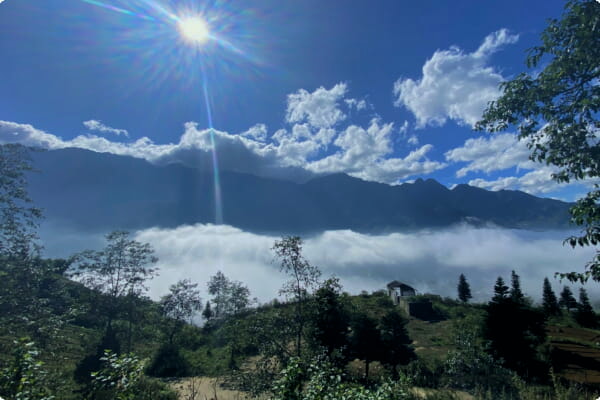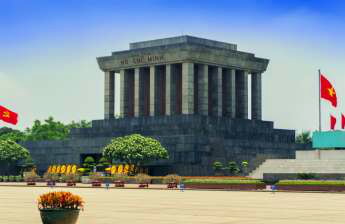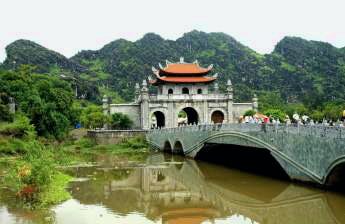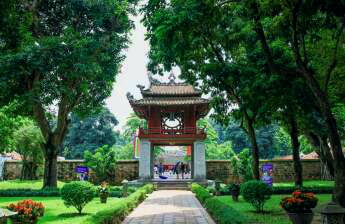Located in the heart of the city, Hoan Kiem Lake is a great place to visit for a fun and relaxing day. Whether you're in the mood for a walk along the promenade, a game of chess, or a romantic sunset, you'll find something to entertain you.
Turtle Pagoda
Located in the center of Hoan Kiem Lake, the Turtle Tower is an interesting structure to see. It is also a good place to take a break from the bustling life of the city. This is a landmark that the Vietnamese government has put a lot of effort into maintaining.
The roof of the pagoda is covered with curved patterns that are often seen in Eastern temples. There are many small dwellings around the perimeter of the pagoda.
A large Buddha is carved into the main altar. It is approximately 1.5 meters tall. It is covered with gold. It also features a prayer book printing facility.
The roof has four curved edges. The bottom floor is separated into three compartments. The top floor is a gazebo-style hut.
Turtle Tower
Located near Hoan Kiem Lake, the Turtle Tower is a mysterious and interesting structure. It is an imposing building with a three-story structure and a roof that is curved and has four edges. It also has a unique effect, such as a moon-like light shining from inside the tower.
The tower is a blend of French and Oriental architectural styles. It is built on a 350 square-meter mound in the center of the lake. It has a gazebo-like top floor with two meter width on each side. It also has a roof that has a curved decoration pattern that is often found in old Eastern temples. It has 10 doors on the bottom and 3 on the top floor.
Its name was derived from a legend involving a giant turtle snatching a razor blade from the Emperor Le Loi. The legend also mentions a golden turtle, which gave Le Loi a mystical sword.

Temple of the Jade Mountain
Located on an island in Hoan Kiem Lake, the Temple of the Jade Mountain is one of Hanoi's most popular temples. It is dedicated to the legendary war hero Tran Hung Dao, who led the Vietnamese Army to victory over the Mongols in the 13th century.
The complex includes the main building, which is surrounded by pavilions, and shops. In addition, there are several altars, shrines, and ancient bronze relics. There is also a large bronze bust of Tran Hung Dao.
The Temple of the Jade Mountain is connected to the mainland via the elegant scarlet bridge. This bridge is painted in classical Vietnamese design. It is lined with colourful flags and is flanked by stone arches with Chinese writing. The ticket office is located in front of the bridge.
Traditional water puppet show
Originally, water puppet shows were performed on flooded rice fields. During harvest time, villagers would gather together and perform impromptu water puppet shows. They used a series of bamboo poles to support their puppets.
The first evidence of water puppetry is a stone stele in the kingdom of Ly Nhan Tong that has written "Sung Thien Dien Linh". The stele dates back to the dynasty of the Ly.
During the time of peace and prosperity, handicrafts were a huge attraction. These artisans were talented artists who performed elaborate water puppet shows. These were a great pass-time activity for the villagers and the Royals.
The most exciting piece of the water puppet show is the fighting fox catching duck. This is a very impressive technique where the fox swims up to a duck, climbs a tree, and eventually catches it.

Hanoi Opera House
Located in the heart of Hanoi, the Opera House has been a place for cultural events and entertainment. It is a venue for classical music and ballet. It also hosts various concerts and live performances. The Hanoi Opera House is a beautiful building with classical-motif patterns and a strong cultural influence.
The Opera House is divided into three different sections. The Ancient House, the Audience Hall, and the Dressing Room. There are also two rooms for training. The audience room accommodates up to 800 people, while the dress room can hold up to 60.
The theater was modeled after the Palais Garnier in Paris. The architects studied the Tuylory castle in Paris and other ancient Greek architecture. The construction was completed after ten years. The roof of the theater is made of stone-tiled tiles. The Roman Ionic order is visible in the system of pillars. The theater cost about 2 million French francs to build.







